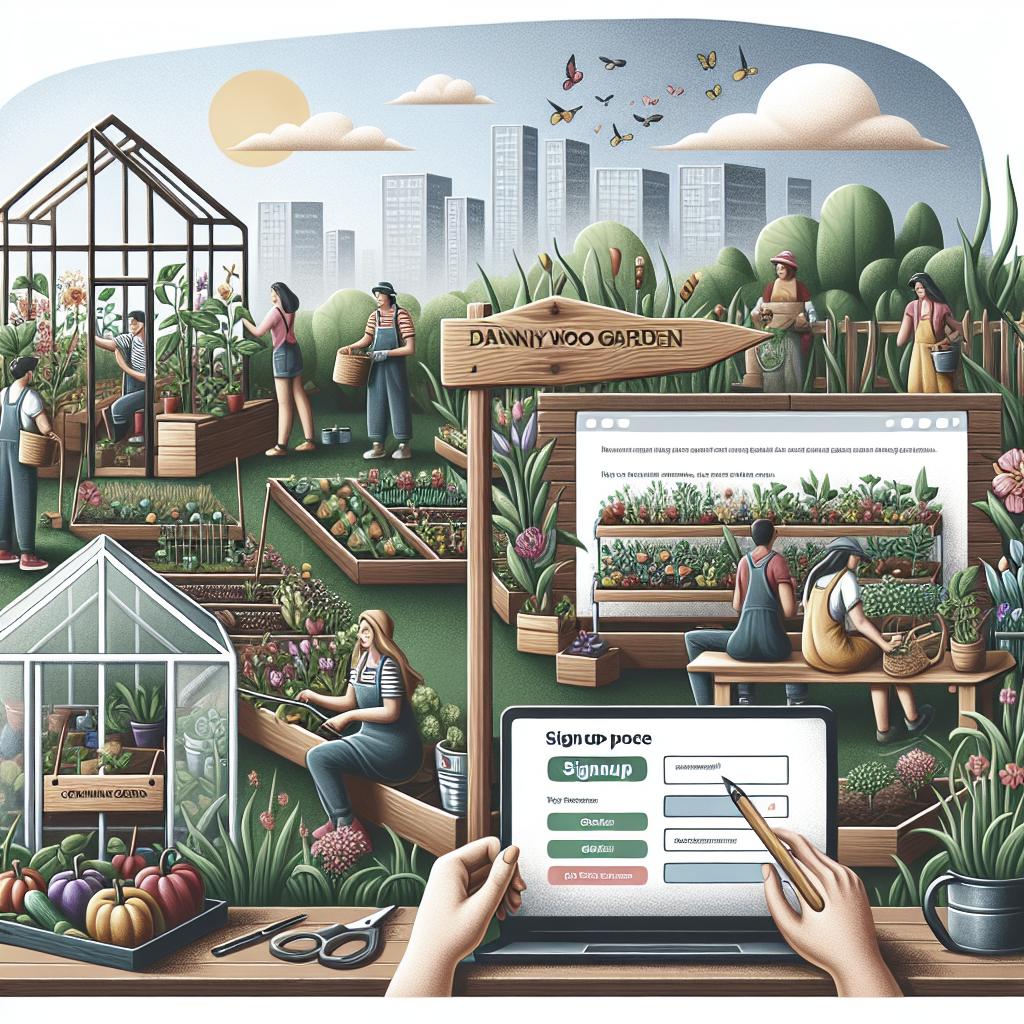Community gardens have become a popular initiative in urban and suburban areas, providing a space for people to grow their own food, build community connections, and improve the local environment. These gardens serve as an educational tool for sustainable practices and support the local ecosystem by fostering biodiversity. This comprehensive guide will walk you through the essentials of starting and maintaining a community garden, emphasizing soil health improvement. From organizing community members and choosing a garden site to innovative soil amendment techniques and best gardening practices, these insights aim to help you build a thriving community garden that promotes environmental stewardship and community spirit.
What is a community garden?
A community garden is a shared space where individuals or groups come together to grow vegetables, fruits, herbs, and ornamental plants. These gardens are typically organized and maintained by community members who share a common interest in gardening and sustainable living. Community gardens can vary in size, from small plots in urban areas to larger expanses of land in suburban or rural settings. They offer several benefits, including access to fresh produce, physical activity, and opportunities for social interaction. Community gardens often operate on a membership basis, where participants rent or are allocated plots to cultivate. These gardens can also feature communal areas where members work together to grow and harvest crops. The shared responsibility and collaboration inherent in community gardening foster a strong sense of community and collective achievement.
Why community gardens?
Community gardens play a crucial role in promoting environmental sustainability and healthy lifestyles. By providing access to fresh, locally-grown produce, these gardens encourage healthier eating habits and reduce the carbon footprint associated with transporting food over long distances. They also offer an opportunity for people to learn about organic gardening practices, composting, and other environmentally-friendly techniques. Additionally, community gardens help to improve urban landscapes by converting unused or underutilized spaces into green, productive areas. This transformation can enhance the aesthetic appeal of neighborhoods, reduce urban heat islands, and provide habitats for pollinators and other wildlife. By fostering a sense of ownership and pride in local spaces, community gardens also contribute to community cohesion and resilience.
Find a community of people
The first step in starting a community garden is to gather a group of like-minded individuals who are passionate about gardening and sustainability. Reach out to neighbors, local organizations, schools, or social media groups to find potential members. Hosting a community meeting or gardening workshop can be an effective way to gauge interest and attract participants. Once you have a group of interested individuals, it’s essential to establish a core team to spearhead the project. This team should include people with diverse skills and expertise, such as project management, gardening knowledge, and fundraising abilities. A committed and well-rounded team will ensure the project’s success and longevity.
Organize the people
Organizing the people involved in your community garden is crucial for smooth operation and effective decision-making. Start by defining roles and responsibilities for each team member. This can include tasks such as coordinating volunteers, managing finances, overseeing garden maintenance, and handling communications. Regular meetings and clear communication channels are essential for keeping everyone informed and engaged. Establish a schedule for meetings and create a communication plan, which can include email lists, social media groups, or messaging apps. Encourage active participation and input from all members to ensure that everyone feels valued and invested in the project.
Organize a community garden
Once your core team is in place, the next step is to establish a formal organizational structure for your community garden. This can involve creating a mission statement, bylaws, and a governance model. Having clear guidelines and procedures will help streamline decision-making and maintain transparency. Consider forming partnerships with local organizations, businesses, or government agencies to support your garden. These partnerships can provide valuable resources, such as funding, materials, and expertise. Additionally, they can help raise awareness about your community garden and attract new members.
Find a site
Finding the right site for your community garden is a critical step in the planning process. Look for available land in your neighborhood, such as vacant lots, parks, or schoolyards. Reach out to local authorities, landowners, or real estate agents to inquire about possible sites. When evaluating potential sites, consider factors such as accessibility, sunlight exposure, soil quality, and availability of water. A site that is easily accessible to community members and receives ample sunlight will be more conducive to successful gardening. Ensuring a reliable water source is also essential for maintaining healthy plants.
Location considerations
The location of your community garden can significantly impact its success. Choose a site that is centrally located and easily accessible to the community you aim to serve. Proximity to public transportation, sidewalks, and bike lanes can make it easier for people to visit and participate in the garden. Additionally, consider the security of the site. A location that is visible and frequented by people can help deter vandalism and theft. Installing fencing, lighting, and security cameras can also enhance the safety and security of your community garden.
Landowner considerations
When selecting a site for your community garden, it’s essential to address landowner considerations. If the land is privately owned, you’ll need to obtain permission from the landowner. This can involve negotiating a lease or a use agreement outlining the terms and conditions of your garden’s operation. For publicly-owned land, you may need to work with local government agencies to secure the necessary permits and approvals. Building a positive relationship with landowners and local authorities can help ensure long-term access to the site and support for your community garden.
Design a garden
Designing your community garden involves creating a layout that maximizes the use of available space and accommodates the needs of your members. Start by sketching a basic plan that includes garden plots, pathways, communal areas, and infrastructure such as sheds or water sources. Consider the flow of movement and accessibility in your design to ensure that all areas are easily reachable. Incorporate sustainable practices into your garden design, such as composting areas, rainwater harvesting systems, and native plants that support local biodiversity. Using raised beds or container gardening can be beneficial in areas with poor soil quality or limited space. Involve community members in the design process to ensure that the garden meets their needs and preferences.
Build a garden
Building your community garden is a collaborative effort that involves preparing the site, installing infrastructure, and planting crops. Begin by clearing the site of any debris or unwanted vegetation. Test the soil to determine its quality and nutrient levels, and amend it as needed to create a fertile growing environment. Next, install garden infrastructure such as raised beds, pathways, fencing, and water systems. Organize volunteer workdays where community members can come together to help with the construction and planting. This hands-on involvement fosters a sense of ownership and pride in the garden.
Amend the soil
Improving soil health is crucial for a productive community garden. Start by enriching the soil with organic matter, such as compost, manure, or leaf mold. These amendments add essential nutrients, improve soil structure, and enhance water retention. Regularly testing the soil and adjusting the amendments based on the results can help maintain optimal soil conditions. Incorporating cover crops, such as legumes or clover, can also benefit soil health. These plants enhance nitrogen levels, prevent soil erosion, and improve soil structure. Mulching with organic materials like straw, wood chips, or leaves can help conserve soil moisture, suppress weeds, and add nutrients as the mulch decomposes.
Best practices
Adopting best practices in your community garden ensures long-term success and sustainability. Encourage crop rotation to prevent soil depletion and reduce the risk of pests and diseases. Implement integrated pest management strategies that prioritize natural and organic methods for controlling pests and promoting plant health. Regularly engage with community members through workshops, events, and workdays to foster a sense of community and shared responsibility. Educate participants about sustainable gardening practices, composting, and the importance of soil health. Creating a supportive and knowledgeable community will help ensure the garden’s thriving future.
Next Steps
| Step | Description |
|---|---|
| Find a community of people | Gather a group of interested individuals who are passionate about gardening and sustainability. |
| Organize the people | Define roles and responsibilities, establish communication channels, and encourage active participation. |
| Organize a community garden | Create a formal organizational structure, establish partnerships, and develop a mission statement. |
| Find a site | Identify and evaluate potential sites based on accessibility, sunlight exposure, soil quality, and water availability. |
| Location considerations | Ensure the site is centrally located, accessible, and secure. |
| Landowner considerations | Obtain permission from the landowner, and negotiate a lease or use agreement. |
| Design a garden | Create a layout that maximizes space and incorporates sustainable practices. |
| Build a garden | Prepare the site, install infrastructure, and plant crops with community involvement. |
| Amend the soil | Enhance soil health with organic matter, cover crops, and mulching. |
| Best practices | Adopt sustainable gardening practices, engage the community, and educate participants about soil health. |


